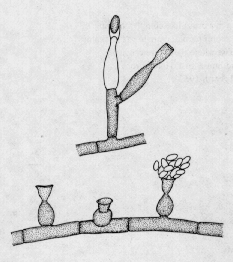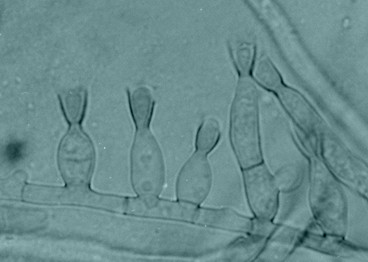Main page <> Index of descriptions <> Previous description <> Phialophora <> Next description


Phialophora
Characterized by brown to black colonies bearing phialides directly on the vegetative filaments or on short branches. The phialides are dark, flask-shaped, and have a collar-like or flared apex. The colourless to brown 1-celled spores (conidia) are produced successively from the apex of the phialides. Some species may produce dark brown hololastic conidia along the vegetative hyphae or at the tips of short branches. Species of Exophiala are similar and are separated from those of Phialophora mainly on the basis of producing annellides rather than phialides. The differences between the two are subtle in some instances. There are numerous other fungi not closely related to Phialophora as strictly defined. Seifert et al. provide a key written by the eminent Dutch mycologist Dr. Walter Gams to 36 genera that could be confused with Phialophora.
Phialophora species have been isolated from soil, water, dung, wood and plant debris.
Classification: Herpotrichiellaceae (Eurotiomycetes). Holomorphs: Capronia. Ref: Cole and Kendrick 1973; Ellis 1971, 1976; Schol-Schwarz 1970; Wang, 1990